Motorcycling's cup has runneth over with Italian bikes at the Milan International Motorcycle Show. Bimota released a bunch of new bikes, Ducati debuted some new bikes including the 1199 Panigale and Moto Guzzi revamped the V7 line for 2012. This is great news for Italophiles everywhere.
First up from Bimota is the DB10 Bimotard based on the Ducati Hypermotard. The air-cooled Ducati L-Twin remains and it bears a vague resemblance to the Hypermotard. The similarities end there. It's awash in carbon fiber and has a hand-formed trellis frame holding the bike together. Fully-adjustable suspension is standard, naturally, and it consists of 50mm Marzocchi forks up front and an Extreme Tech shock out back. There are also giant radial Brembos to make sure you stop before you hiy whatever you're screaming toward. Bimota claims a dry weight of 369 lbs, 10 pounds less than the standard Hypermotard.
Bimota's entry into the naked bike segment is the DB9 Brivido, based upon the Ducati Streetfighter. This model is also awash in carbon fiber but is built around the liquid-cooled 1198cc twin that blasts out 162 hp. Yes, it has fully-adjustable suspension from Marzocchi and Extreme Tech but this time the front forks are 43mm, compared to the 50mm forks on the Bimotard. Stopping all this carbon fiber are the same big Brembos but this time they're bolted to lightweight wheels from O.Z.
If you were expecting another Ducati-based Bimota, you're in for a disappointment. The final new Bimota released is a dirt bike called the BBX300. It has the hand-formed chassis you'd expect from Bimota but it has something you didn't: a two-stroke engine built in-house. Normally, Bimota builds their bikes around the engines of other manufacturers. Bimota tried their hand at building a two-stroke in-house with the V Due back in the 90s. The bike was a mess and never really worked properly. Let's hope the new engine works out.
From Ducati, all eyes were on the 1199 Panigale. This bike is the replacement for not only the 1198 but also for the Testastretta engine that has served Ducati well for so many years. The Testastretta can trace its roots all the way back to the Ducati Pantah, which debuted in 1980. The engine in the Pantah was 500cc, air-cooled and SOHC. Over the course of 30 years, the engine came to have 1198cc, liquid-cooling, DOHC and 170 hp.
The new engine is 1199cc and pumps out 195 hp, making it the most powerful twin cylinder engine you can buy. This engine heralds another change for Ducati: the ubiquitous L-Twin is no more. The V-Twin's cylinders are still 90 degrees apart but they have been rotated back, resembling a typical V-Twin arrangement.
Surrounding the engine is an all-new monocoque chassis, giving the bike a dry weight of 362 lbs. That's astonishing, especially with an engine that puts out 195 hp. The Panigale is also overflowing with three letter acronyms like ABS, DTC, DES, DQS, EBC, RbW and TFT. It's best to get the monoposto version so you don't bore your passenger while explaining all the acronyms.
Ducati also showed the Diavale Chromo, which is a restyling of the Diavale. Basically, they gave the tank a black-chrome effect, covered the rest of the bike in black paint and hiked up the price. Next to the Chromo was the 848 Evo Corsa Special Edition. This 848 has an Ohlins shock out back, special paint, bigger brakes, traction control, quick shifter and a really long name.
From Mandello del Lario comes a refreshed V7 in all-black paint. The spoked wheels have been replaced by mags, which are, you guessed it, black. The new V7 has a new 750cc engine with a single throttle body and a bump up in compression. 70% of this engine is completely new, including the throwback valve covers. All of this leads to more torque and a jump to 51 hp. Over all, the V7 is still absolutely gorgeous, still too slow and still too expensive.
Following the regular V7 is a Special Edition model with different paint and the same specs and the Racer. The Racer (above) takes the place of the V7 Cafe Classic and has a chrome gas tank, a special seat, clip-ons and a small flyscreen above the headlamp. You might be interested in the new spoked wheels that reduce weight by 1,440 grams up front and 860 grams in the back. To put those numbers in perspective, that's less than Ozzy Osbourne's daily cocaine intake during the 1970s. Overall, the Racer is a ghastly replacement for the classically beautiful Cafe Classic. At least it has more power.
Subscribe to:
Post Comments (Atom)

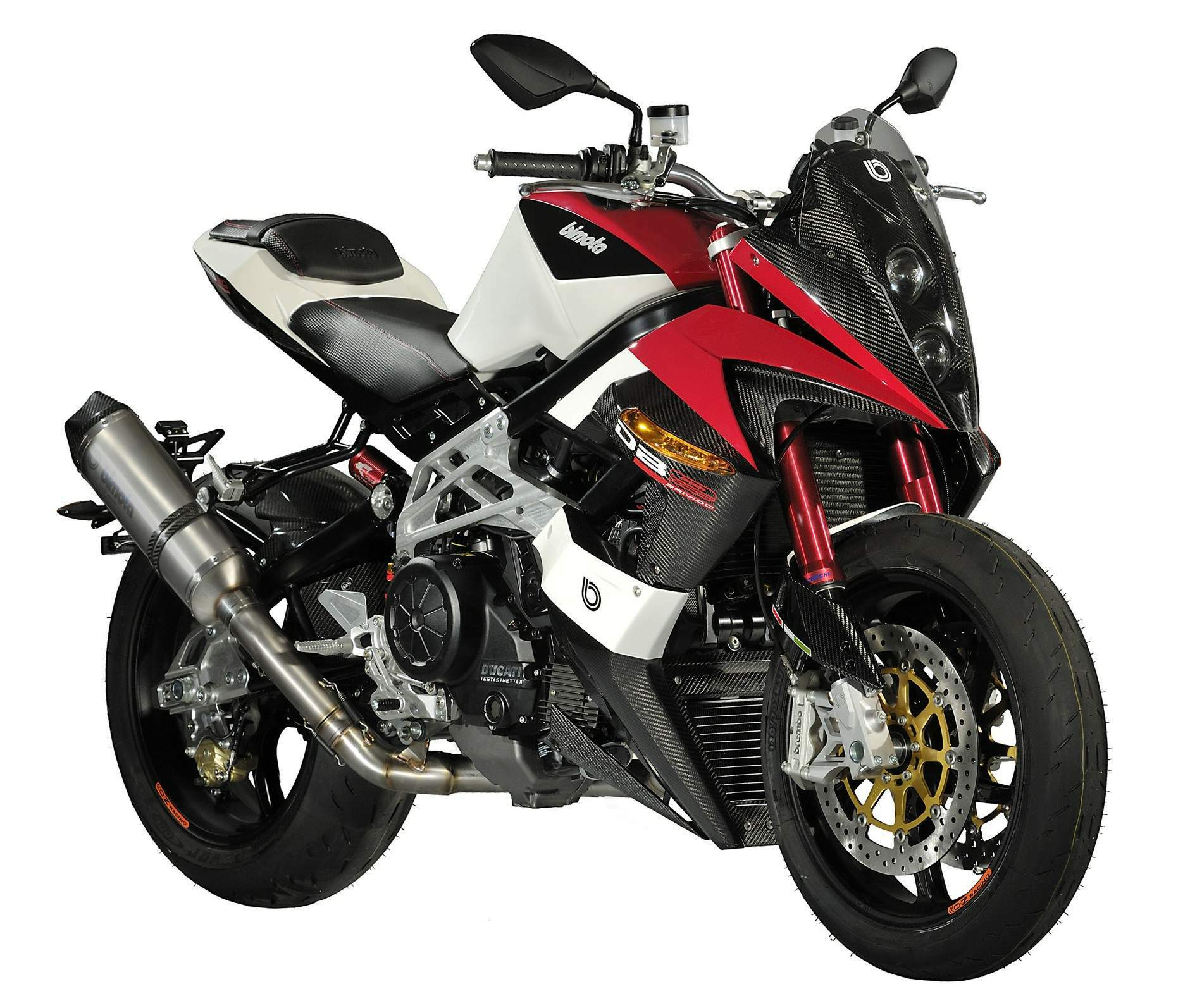

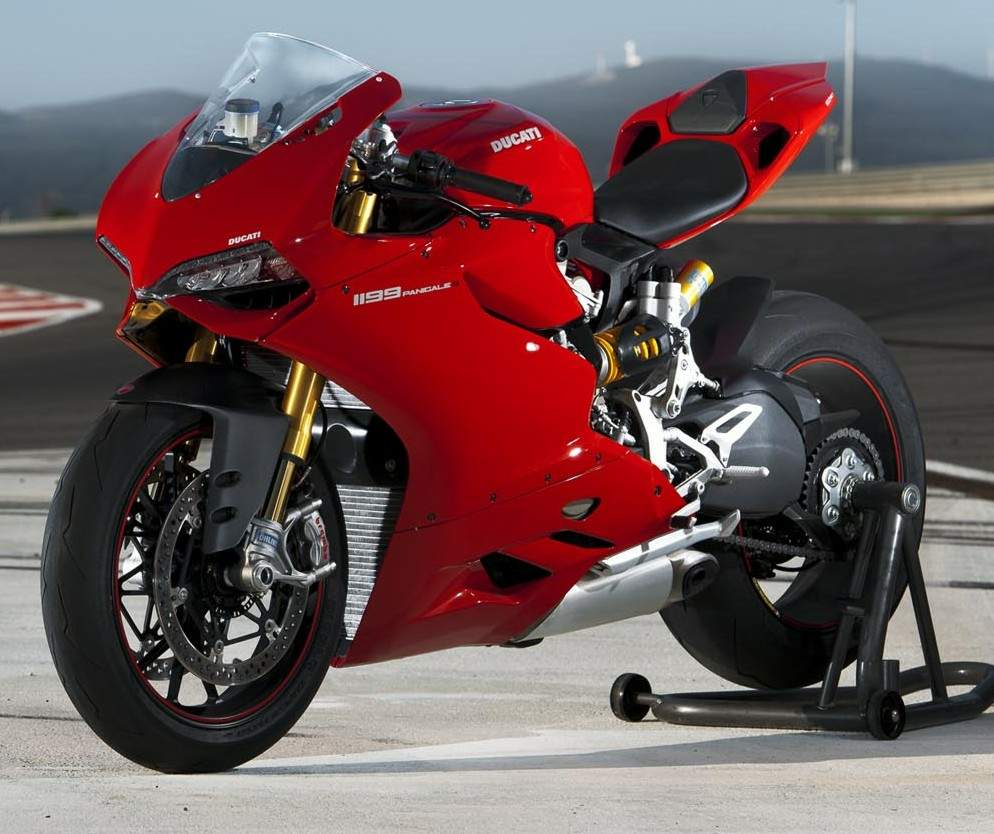
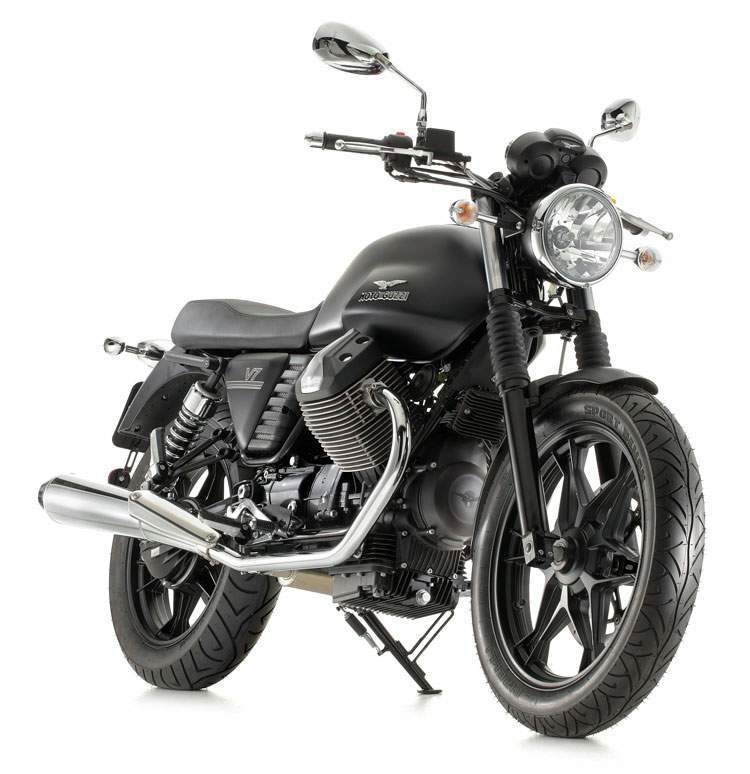
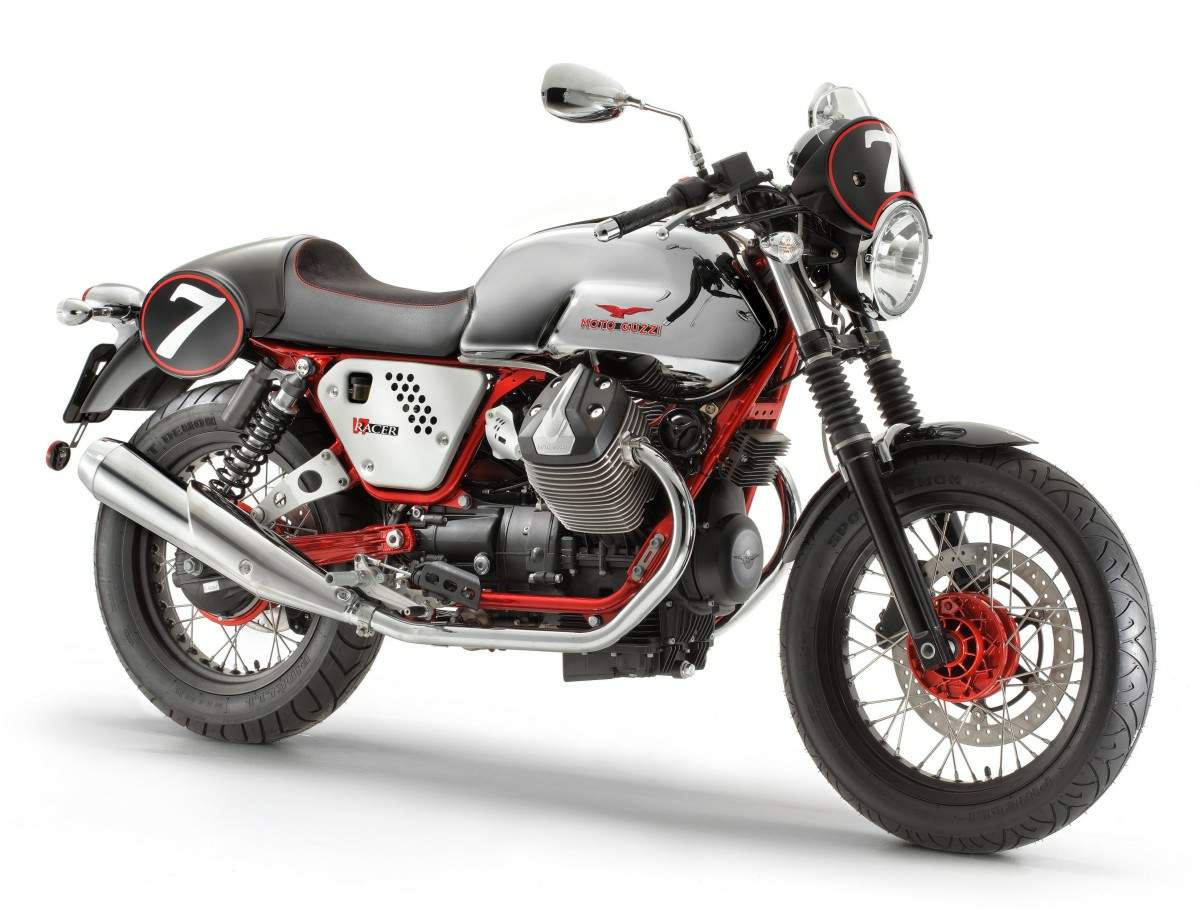
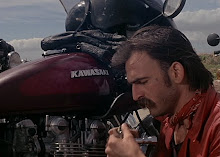
No comments:
Post a Comment